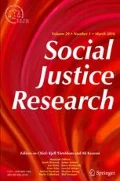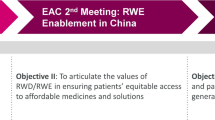Abstract
This paper analyses the allocation of R&D investments within rare diseases and identifies the characteristics of rare diseases that appear to lead R&D resources. Rare diseases affect less than 1 in 2000 citizens. With over 7000 recognised rare diseases and 350 million people affected worldwide, rare diseases are not so rare when considered collectively. Rare diseases are generally underserved by drug development because pharmaceutical industries consider R&D investments in rare diseases too costly and risky in comparison with the low expected returns due to the small population involved. We use data on rare diseases research from Orphanet along with academic publications per rare disease from bibliographic databases. We test the existence of inequalities in R&D investments within rare diseases and identify the disease characteristics that appear to lead R&D investments using dominance tools and bilateral tests. We show that rare diseases in children and with a smaller prevalence, such as ultra-rare diseases, are underserved by R&D. R&D investments appear to be concentrated in more profitable research areas with potentially larger sample size and adult population.




Similar content being viewed by others
Notes
Regulation (EC) No 141/2000 of the European Parliament and of the Council of 16 December 1999 on orphan medicinal products (OJ L 18, 22.1.2000, p.1), last amended by Regulation (EC) No 596/2009 (OJ L 188, 18.07.2009, p. 14).
See: https://ncats.nih.gov/.
Human rights and health: http://www.who.int/news-room/fact-sheets/detail/human-rights-and-health.
European Commission memo: http://europa.eu/rapid/press-release_MEMO-14-141_en.htm.
The Cramer’s V statistics indicates how strongly two categorical variables are associated (Sheskin, 2003). The statistics is ranging between 0 and 1, the maximum value indicating perfect relationship.
References
Aghion, P., Howitt, P., & Murtin, F. (2010). The relationship between health and growth: When Lucas meets Nelson-Phelps (Working Paper No. 15813). National Bureau of Economic Research.
Anell, A. (2004). Priority setting for pharmaceuticals. The European Journal of Health Economics, Formerly: HEPAC, 5(1), 28–35.
Bavisetty, S., Grody, W. W., & Yazdani, S. (2013). Emergence of pediatric rare diseases. Rare Diseases, 1, e23579.
Bentham, J., & Mill, J. S. (2004). Utilitarianism and other essays. UK: Penguin.
Brazier, J., Rowen, D., Murkuria, C., Whyte, S., Keetharuth, A., Rise Hole, A., et al. (2013). Eliciting societal preferences for burden of illness, therapeutic improvement and end of life for value based pricing: A report of the main survey. Sheffield, York: Report for the Department of Health EEPRU.
Cookson, R., & Dolan, P. (2000). Principles of justice in health care rationing. Journal of Medical Ethics, 26(5), 323–329.
Drummond, M., & Towse, A. (2014). Orphan drugs policies: A suitable case for treatment: Editorial. European Journal of Health Economics, 15(4), 335–340.
Dubois, P., De Mouzon, O., Scott-Morton, F., & Seabright, P. (2015). Market size and pharmaceutical innovation. The RAND Journal of Economics, 46(4), 844–871.
Field, M. J., & Boat, T. F. (2010). Profile of rare diseases. Washington, DC: National Academies Press.
Gericke, C. A., Riesberg, A., & Busse, R. (2005). Ethical issues in funding orphan drug research and development. Journal of Medical Ethics, 31(3), 164–168.
Giannuzzi, V., Conte, R., Landi, A., Ottomano, S. A., Bonifazi, D., Baiardi, P., et al. (2017). Orphan medicinal products in Europe and United States to cover needs of patients with rare diseases: An increased common effort is to be foreseen. Orphanet Journal of Rare Diseases, 12(1), 64.
Hughes, D. A., Tunnage, B., & Yeo, S. T. (2005). Drugs for exceptionally rare diseases: Do they deserve special status for funding? QJM: An International Journal of Medicine, 98(11), 829–836.
Joseph, P. D., Craig, J. C., & Caldwell, P. H. Y. (2015). Clinical trials in children. British Journal of Clinical Pharmacology, 79(3), 357–369.
Lathyris, D., Panagiotou, O. A., Baltogianni, M., Ioannidis, J. P. A., & Contopoulos-Ioannidis, D. G. (2014). Safety of medical interventions in children versus adults. Pediatrics, 133(3), e666–e673.
Lefranc, A., Pistolesi, N., & Trannoy, A. (2008). Inequality of opportunities vs. inequality of outcomes: Are Western societies all alike? Review of Income and Wealth, 54(4), 513–546.
Lefranc, A., Pistolesi, N., & Trannoy, A. (2009). Equality of opportunity and luck: Definitions and testable conditions, with an application to income in France. Journal of Public Economics, 93(11–12), 1189–1207.
Lefranc, A., & Trannoy, A. (2016). Equality of opportunity: How to encompass fifty shades of luck, ECINEQ Working Paper Series.
Lichtenberg, F. R. (2003). The effect of new drug approvals on HIV mortality in the US, 1987–1998. Economics & Human Biology, 1(2), 259–266.
Lichtenberg, F. R. (2013). The impact of new (orphan) drug approvals on premature mortality from rare diseases in the United States and France, 1999–2007. European Journal of Health Economics, 14(1), 41–56.
Lichtenberg, F. R. (2014). Pharmaceutical innovation and longevity growth in 30 developing and high-income countries, 2000–2009. Health Policy and Technology, 3(1), 36–58.
Lichtenberg, F. R. (2016). The impact of pharmaceutical innovation on premature cancer mortality in Switzerland, 1995–2012. The European Journal of Health Economics, 17(7), 833–854.
Martin, D. K., Giacomini, M., & Singer, P. A. (2002). Fairness, accountability for reasonableness, and the views of priority setting decision-makers. Health Policy, 61(3), 279–290.
McCabe, C., Claxton, K., & Tsuchiya, A. (2005). Orphan drugs and the NHS: Should we value rarity? BMJ, 331(7523), 1016–1019.
McKie, J., & Richardson, J. (2003). The rule of rescue. Social Science and Medicine, 56(12), 2407–2419.
Mossialos, E., & King, D. (1999). Citizens and rationing: Analysis of a European survey. Health Policy, 49(1–2), 75–135.
Otsuka, M. (2013). Prioritarianism and the measure of utility. Journal of Political Philosophy, 23(1), 1–22.
Paulden, M. (2017). Recent amendments to NICE’s value-based assessment of health technologies: Implicitly inequitable? Expert Review of Pharmacoeconomics & Outcomes Research, 17(3), 239–242.
Paulden, M., O’Mahony, J. F., Culyer, A. J., & McCabe, C. (2014). Some inconsistencies in NICE’s consideration of social values. PharmacoEconomics, 32(11), 1043–1053.
Roemer, J. E. (1998). Theories of distributive justice. Harvard University Press.
Rogge, J., & Kittel, B. (2016). Who shall not be treated: Public attitudes on setting health care priorities by person-based criteria in 28 nations. PLoS ONE, 11(6), e0157018.
Schieppati, A., Henter, J. I., Daina, E., & Aperia, A. (2008). Why rare diseases are an important medical and social issue. The Lancet, 371, 2039–2041.
Scott Morton, F., & Kyle, M. (2011). Chapter twelve—Markets for pharmaceutical. In M. V. Pauly, T. G. Mcguire, & P. P. Barros (Eds.), Handbook of health economics (Vol. 2, pp. 763–823). Amsterdam: Elsevier.
Stafinski, T., Menon, D., Philippon, D. J., & McCabe, C. (2011). Health technology funding decisionmaking processes around the world. Pharmacoeconomics, 29(6), 475–495.
Temkin, L. S. (2003). Equality, priority or what? Economics & Philosophy, 19(1), 61–87.
Thébaut, C., & Wittwer, J. (2017). L’évaluation économique en santé au prisme de l’économie normative: Principes allocatifs et règles de priorisation, Taking redistributive principles into account in the economic evaluation of health care: A review of available methods. Revue française des affaires sociales, 3, 169–191.
Williams, A. (1997a). Intergenerational equity: An exploration of the ‘fair innings’ argument. Health Economics, 6(2), 117–132.
Williams, A. (1997b). The rationing debate: Rationing health care by age: The case for. BMJ, 314(7083), 820.
Williams, A., & Cookson, R. (2000). Equity in health. In A. J. Culyer, & J. P. Newhouse (Eds.), Handbook of health economics (Chap. 35, Vol. 1, pp. 1863–1910). Elsevier.
Acknowledgements
Authors are grateful to Christine Le Clainche, Clémence Thébaut, Aki Tsuchiya, the EuHEA 2018 conference participants and colleagues from the Economics School Louvain seminar for their useful comments and suggestions. We also received detailed and useful reports from two reviewers and the editors of this special issue that substantially helped us improve the paper. Any remaining errors are our responsibility.
Author information
Authors and Affiliations
Corresponding author
Additional information
Publisher's Note
Springer Nature remains neutral with regard to jurisdictional claims in published maps and institutional affiliations.
Rights and permissions
About this article
Cite this article
Raïs Ali, S., Tubeuf, S. (In)-Equality in the Allocation of R&D Resources for Rare Diseases. Soc Just Res 32, 277–317 (2019). https://doi.org/10.1007/s11211-019-00332-w
Published:
Issue Date:
DOI: https://doi.org/10.1007/s11211-019-00332-w




